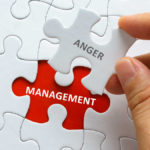If you want to connect with people it’s important to know how to build rapport quickly.
This may be useful if you want to:
- Get a promotion or a new job
- Charm your audience
- Make a sale
- Get a date
- Make new friends
- Approach interesting people
Also, think about the times you met someone and immediately liked him or her without being able to specifically point out what you liked or disliked about the person.
Wouldn’t it be nice to confidently walk up to a person knowing what to do so that the person will like you?
There are specific behaviors involved in building rapport quickly.
Let’s first define rapport and then look at the specific behaviors to build it.
What is Rapport?
The dictionary defines rapport as “harmonious or sympathetic communication”.
Rapport is when people feel comfortable with each other even if they just met.
When you build rapport with others, there is a common ground of understanding that facilitates harmonious relationships and communication.
Rapport is the first step toward trust and attention from the other person.
Sometimes we meet someone for the first time and it feels like we have known that person for years.
We immediately feel comfortable, attentive, and ready to communicate with that person.
Importance of Building Rapport
Building rapport is important because it will lead to:
- more serious communication
- the perception of credibility
- trust
The purpose of rapport is to experience the world through the same eyes, ears, and feelings as other people so that they feel that we understand them.
According to research, we have about 90 seconds to build rapport.
People with similar interests have natural rapport. Think about your friends. You get along with them because you share similar interests and opinions.
“The key to establishing rapport with strangers is to learn how to become like them,” Nicholas Boothman
If you want to establish a connection with someone, you may change your behavior for a short period of time to become more like the other person.
Let’s take a look at how to build rapport quickly so that people will like you.
These strategies are based on the book How to Make People Like You in 90 Seconds or Less by Nicholas Boothman
How to Build Rapport Quickly
There are basic areas to build rapport quickly:
- Positive Attitude
- Body Language
- Synchronization
- Conversation
- Sensory preferences
Improving in any of these areas will help you establish rapport and communicate more effectively with others.
From these different areas, the most important one is to have a positive attitude. Boothman calls it a really useful attitude.
First impressions are very important and will depend more on your attitude than on what you are wearing.
1 – Positive Attitude
“The quality of your attitude determines the quality of your relationships.”
Nicholas Boothman
Your attitude impacts your:
- thoughts
- mood
- tone of voice
- choice of words
- body language
Be cheery and interested in the other person to build rapport quickly.
What you send out to the world comes back to you.
First, determine what outcome you want from the interaction with the other person.
Second, ask yourself what attitude will be the most useful to get what you want.
Finally, monitor your attitude so that it will help you achieve your goal.
There are only negative and positive attitudes.
If you have a positive attitude, your posture, movements, and expression will also be positive even before you start talking.
A positive attitude includes being
- Warm
- Enthusiastic
- Confident
- Supportive
- Relaxed
- Curious
- Resourceful
- Comfortable
- Engaging
- Patient
- Welcoming
- Interested
- Cheery
If you know what you want from a social interaction it will be easier to get it because you are focused on the outcome and will know what attitude will be the most useful.
2 – Body Language
When you meet someone new, immediately point your heart warmly at that person’s heart. There is magic in this.
Nicholas Boothman
When you meet someone, the first few seconds of the encounter will determine what the other person will think about you.
Become aware and connect with your positive attitude.
Open Body Language
“Keep your heart aimed directly at the person you’re meeting. Don’t cover your heart with your hands or arms.” Nicholas Boothman
For a friendly first impression become aware of your body language.
Keep your arms to the side of your body in a welcoming position.
Eye Contact
Look at the other person directly in the eyes. Be the first one to make eye contact.
Smile
Be the first one to smile.
Say “Hi”
It doesn’t matter if you say “hi”, “hello” or “yo.”
Say it loud so that the other person can clearly hear you and with a friendly tone of voice.
If you meet the person for the first time, add your name such as “Hi, I am Joe”
Extend your hand if appropriate.
Use the Other Person’s Name
Once you know the name of the other person, repeat it to make sure you understood the name correctly.
For example, Jessica. Nice to meet you, Jessica.
Use it in conversations and repeat it in your mind so that you can remember it later.
Lean
After the introductions, slightly tilt forward toward the other person to indicate your interest and openness.
Here are more tips on How to Improve Your Communication Skills: Body Language.
3 – Synchronize Your Behavior
We tend to copy the words, gestures, and body language of the people we are in rapport with. This happens naturally when people trust, like, and are comfortable with each other.
You can copy other people’s behavior as soon as you meet them to establish rapport.
When two people have rapport they tend to copy each other body language.
For example: when one person picks up a cup, the other follows; one leans forward, the other does the same.
The body position, rhythm, and tone of voice are very similar.
We unconsciously respond to other people’s behaviors without even thinking about them.
Synchronizing is adapting to the other person.
When you align your body, gestures, and tone of voice with the other person, he or she will feel more relaxed, open, and happy to be with you.
4 – Conversation and Communication
According to Richard Bandler and John Grinder, “The meaning of communication lies in the response it gets.”
It is your responsibility to get your message across.
For example, you may change your communication until you achieve what you want.
Start by thinking and deciding in advance what response you would want from the other person.
If you know what response you are looking for, you know what to aim for.
Formula for Effective Communication: Know What You Want
Describe in the present tense the type of relationship you are looking for.
For example “I am in a successful relationship with a loving, understanding, and beautiful person.” Describe in your mind what each of these adjectives looks, feels, sounds, smells, and tastes like.
Don’t start with “I don’t want to feel lonely or I don’t want an abusive relationship or I don’t want a long-distance relationship.
Moreover, picture in your mind the type of relationship you are looking for including all the sensory details so that you can help your mind focus on that type of relationship.
Later, evaluate what you’re getting.
Ask yourself what did you attempt so far to meet that person.
What was the outcome?
Maybe you find out that yoga classes, bars, and meditation groups are not a great place to meet people.
Change What You do Until You Get What You Want
Come up with a plan that may help you achieve the goal that you want, which is to meet the type of person you want to interact with.
Try something new.
You may try participating in a running group to meet new people.
Once you do it, evaluate the feedback.
What was the outcome?
Are you satisfied with the outcome?
If you are not satisfied, make a change and try again.
After each new try, evaluate the strategy to decide if it worked or what needs to be changed.
Remember to Listen
Now you know that to build rapport quickly you need to keep an open body language with your heart pointing toward the other person’s heart.
In addition to making eye contact, smiling, introducing yourself, and remembering the other person’s name.
Sometimes when we interact with others we worry about being boring or we are not sure what to say.
Ask Questions
Start with open-ended questions that can’t be answered with a yes or no.
A good way to begin a conversation is to make a general comment about the current situation and then ask an open-ended question.
Also, the general comment should focus on something that you already have in common such as the purpose of the meeting, a current event, or the weather.
Examples:
- “There are so many people in this meeting.”
- “Look at all that food.”
- “It was a nice service.”
After the statement, you follow with a question.
Open-ended questions ask for an explanation, opinion, or feeling. They start with
- What
- How
- When
- Why
- Where
4 – Sensory Preferences
If you want to build rapport quickly it is helpful to identify the preferred sense of the person you are talking to so that you can communicate in his or her preferred style.
People will respond more positively when you use their preferred sensory style.
Even though we use all our senses when we connect with others, we favor one of our senses over others.
People can be divided into visual, auditory, and kinesthetic.
Visual
Visual people think in pictures and focus on the appearance and the look of things for example:
- “Do you see what I’m saying?”
- “See you later.”
- “Let me make this clear.”
- “This looks great.”
- “Imagine how this will look like in your home.”
- “This is a brilliant idea.”
- “I see.”
- “How do you see yourself?”
- “I see what you are saying.”
- “Take a look at my new project.”
Auditory
Auditory folks focus on sounds and how they make them feel such as:
- “Are you listening?”
- “He left me speechless.”
- “This is such a noisy place.”
- “There are rumors about the new associate.”
- “Do you hear me?”
- “I hear the raindrops on the window.”
- “This will be very quiet.”
- “You need to express yourself using the right words.”
- “I need to talk to you.”
- “That sounds familiar.”
Kinesthetic
Kinesthetic individuals talk about how they feel internally and externally emphasizing feelings and touch.
Here are some examples:
- “I know how you feel.”
- “It is so cold.”
- “Hang in there.”
- “Start from scratch.”
- “It was a heated discussion.”
- “That’s such a pain in the neck.”
- “How do you feel about your job?”
- “I’ll get in touch with him.”
- Let’s sort things out.”
- “Do you feel this is a good option?”
This information can be useful to quickly build rapport.
Just in case, be prepared to include all three preferences when you communicate.
Summary of How to Build Rapport Quickly
Start with a positive attitude and open body language. Point your heart at the other person’s heart.
Make eye contact, smile, and introduce yourself.
Lean toward the person to indicate interest and start synchronizing by adopting the same attitude, body language, gestures, and tone of voice.
Find out the other person’s sensory preferences to communicate more effectively.
What area would you first focus on to build rapport quickly?
















Very informative article for everyone to feel motivated to interact with others! I had no idea what rapport was about. Thanks for sharing with us.
I love the tips!!! These also apply to business meetings, don’t they?
Yes, you can apply these tips to business meetings also.
I am so awkward with this, I always just want to walk away!
It is not easy to start conversations and build rapport but if you are motivated to interact with a specific person, you will be able to do it.
Oh wow, this is so helpful. i agree to all these tips!
For me to build rapport is to be open and speak a lot! Too bad I am a reserve person and could always thinks people may have an agenda. I notice by keeping too quiet, people dont really get a long well with me. But once they know me, we have a good rapport
If you know more about a person, it may be easier to build rapport.
These are some great tips for building rapport. One of the things I used to do when I was younger when I was shy was I used to always take the time to listen to people rather than speak. I think it definitely helped me.
I used to have problems with shyness a lot when I was younger, but not that much anymore 🙂
Beautiful and powerful tips for anybody. Be it a job search or making friends, we all need these amazing skills to make life Beautiful.